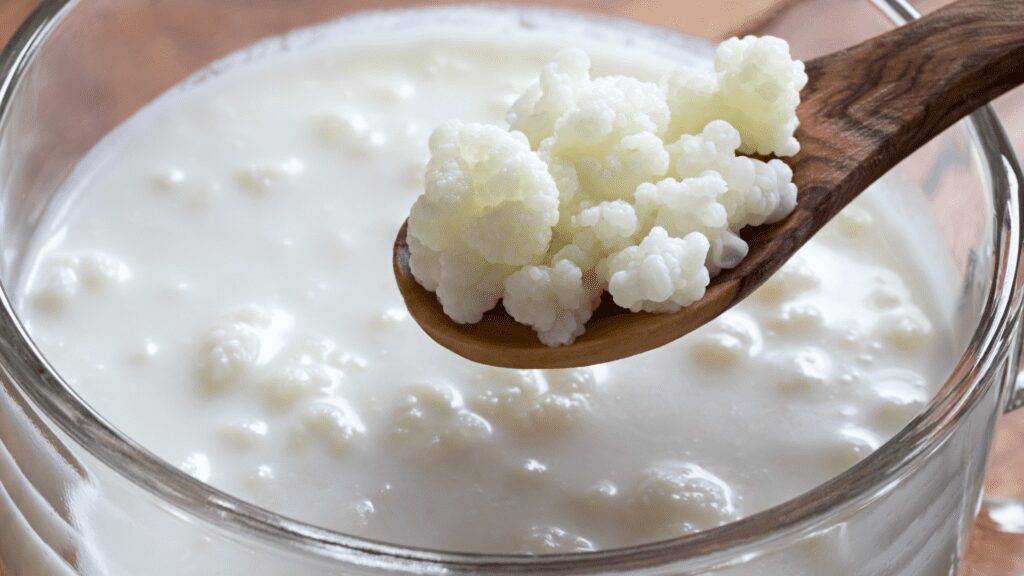Organic Milk Kefir vs. Traditional Kefir: What’s the Difference?
Learn how organic milk kefir compares to traditional kefir in terms of nutrition, flavour, and fermentation process. Find out which one suits your lifestyle best.
Organic Milk Kefir vs. Traditional Kefir: What’s the Difference?

The world of fermented dairy products is vast and varied, with milk kefir standing out as a notable star. But within this realm lies a nuanced debate: Organic Milk Kefir versus Traditional Kefir. Both offer unique benefits, but how do they stack up against each other in terms of nutrition, flavor, and fermentation process? Let’s dive into the details to help you decide which one suits your lifestyle best.
Nutrition Comparison
When it comes to nutrition, both organic milk kefir and traditional kefir are powerhouses, but subtle differences set them apart.
- Organic Milk Kefir: Produced from milk sourced from organically raised cows, free of antibiotics and synthetic hormones. This milk often contains higher levels of beneficial fatty acids like CLA (Conjugated Linoleic Acid). Nutrient-wise, a cup of organic milk kefir offers:
- Calories: 150
- Protein: 8 grams
- Calcium: 30% of daily value
- Vitamin D: Fortified, typically 25% of daily value
- Traditional Kefir: Made from regular cow’s milk or even goat’s milk, depending on regional practices. It shares many nutritional similarities with its organic counterpart but may lack the enhanced nutrient profile associated with organic farming practices. A typical serving includes:
- Calories: 140
- Protein: 8 grams
- Calcium: 30% of daily value
- Vitamin D: Fortified, around 25% of daily value
Flavor Profiles
Understanding flavor is essential, especially since kefir’s unique taste can be an acquired preference.
- Organic Milk Kefir: The organic production process often yields a richer, creamier texture with a slightly tangy undertone. The absence of synthetic additives allows the natural flavors to shine through, giving it a more robust and authentic taste.
- Traditional Kefir: Depending on the type of milk used, traditional kefir can range from mildly tangy to quite tart. Its consistency might be a bit thinner compared to the organic version, especially when made from goat’s milk, which has a naturally different fat composition.
Fermentation Process
Both types of kefir undergo a fermentation process involving beneficial bacteria and yeasts, but there are distinctions worth noting.
- Organic Milk Kefir: The fermentation of organic milk kefir is carried out using kefir grains in milk that adheres to organic standards. This process not only ensures a high count of probiotics like Lactobacillus kefiranofaciens but also maintains the integrity of the milk by avoiding chemical contaminants.
- Traditional Kefir: Traditional kefir fermentation varies globally, with each region adding its unique touch. While the basic process remains the same, the variety of microbial strains can differ, resulting in diverse probiotic profiles. Traditional methods might include fermenting at different temperatures or durations, impacting the final product’s taste and health benefits.
Environmental Impact
Choosing between organic and traditional kefir also involves considering their environmental footprints.
- Organic Milk Kefir: Organic farming practices prioritize sustainability, including better soil health, reduced pollution, and humane animal treatment. This eco-friendly approach often results in a lower overall environmental impact.
- Traditional Kefir: Conventional farming practices may involve the use of pesticides and synthetic fertilizers, which can have more significant environmental repercussions. However, traditional methods in small-scale operations might still incorporate sustainable practices, especially in artisanal settings.
Actionable Tips for Incorporating Kefir into Your Diet
- Smoothies: Blend kefir with fruits like berries and bananas for a nutritious and delicious smoothie.
- Salad Dressings: Use kefir as a base for creamy salad dressings instead of yogurt or mayonnaise.
- Baking: Substitute kefir for milk or buttermilk in baking recipes for a tangy twist.
- Breakfast Bowls: Pour kefir over granola or muesli with fresh fruits for a hearty breakfast.
- Marinades: Use kefir in marinades to tenderize meats and add flavor depth.
Common Questions About Kefir
1. Is organic milk kefir healthier than traditional kefir? Both offer substantial health benefits, but organic milk kefir may have a slight edge due to its lack of synthetic additives and potentially higher levels of beneficial fatty acids.
2. Can I make kefir at home? Absolutely! Both organic and traditional kefir can be made at home using kefir grains and milk of your choice. Ensure you follow proper hygiene practices to maintain the quality of your kefir.
3. How long does kefir last? Refrigerated kefir can last up to two weeks. Always check for changes in smell or taste to ensure it hasn’t gone bad.
4. Are there any lactose-free kefir options? Yes, lactose-free kefir is available and is made using lactose-free milk or fermenting long enough to reduce the lactose content significantly.
5. Can kefir help with digestive issues? Yes, the probiotics in kefir can promote gut health, aid digestion, and alleviate symptoms of conditions like IBS.
In summary, whether you opt for organic milk kefir or traditional kefir, you’re making a health-conscious choice. Each brings its own set of benefits, and the decision ultimately boils down to your personal preferences and lifestyle needs. Embrace the journey of discovering which kefir suits you best!
